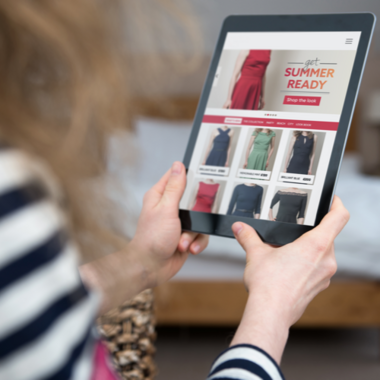
- Three minutes read
3 key findings from Lost in Transaction 2023: The Disposable Income Report
Find out how discretionary spending is changing with these key takeaways from our latest research: Lost in Transaction 2023: The Disposable Income Report.
Many consumers around the world are struggling with economic challenges, and as a result, discretionary spending is changing. So how are consumers using their disposable income, and what are the emerging payment trends for businesses to be aware of?
You can find many fascinating insights in our latest global research, Lost in Transaction: The Disposable Income Report, which surveyed 14,525 consumers across the UK, the Americas, and Europe.
Here are three key takeaways.
Regardless of size, businesses must offer different payment methods
Small and large businesses appeal to consumers in different ways, according to our research. For example, 25% consider larger businesses’ wider range of goods the greatest benefit of shopping with them, while 32% of consumers like the more personalised experience they get from smaller businesses.
And small businesses can look to the year ahead with optimism -- 42% of consumers intend to shop more at local businesses in 2024.
However, to ensure consumers are willing to part with their disposable income, businesses of all sizes must tailor payment offerings to changing expectations, going beyond traditional methods like debit and credit cards.
In fact, 73% of consumers expect large businesses to offer a wide range of payment methods online, including digital wallets and eCash, also known as cash online.
For small businesses, embracing alternative payment methods (APMs) can help address consumers’ security concerns when shopping online. This is especially the case with APMs like digital wallets and eCash, which don’t require consumers’ financial details. After all, only 43% of consumers feel comfortable entering financial details online with a small business.
For small and large businesses alike, there is work to be done to meet consumer needs around security and convenience. Offering APMs that deliver a smooth, secure experience -- like digital wallets and eCash -- can help drive greater success in 2024.
Subscription and streaming services now a priority for discretionary spending
While consumers’ discretionary spending is changing, with continued emphasis on experiences -- 28% of consumers are spending more on eating out than before inflation – subscription and streaming services are becoming increasingly important.
These services are carving out a slice of consumers’ disposable income, with many looking to cut costs elsewhere before reducing subscription services. In fact, 34% of consumers with subscriptions would cut back spending on eating out, before they would consider cancelling their subscription services.
As for the subscriptions that are most popular, film and TV streaming services reign supreme. Of those with subscriptions, 47% selected this type of service when asked which they’d keep, if they were only allowed one.
Check out the full Lost in Transaction: The Disposable Income Report to learn more about how consumers are spending with subscription and streaming services in 2023 and beyond.
Consumers may make more charity donations with greater payment choice
While the new Lost in Transaction research establishes that consumers expect a high level of security and payment choice from large and small businesses, it also found that charities are being held to similar standards.
The preferred payment method for making charitable donations is debit cards (29%), with credit cards next (19%). But over half of respondents (51%) would be more likely to make donations if a charity offered alternative ways of paying in addition to these methods.
It’s also notable that 33% of consumers say having to input sensitive financial information/data would be the most likely reason for abandoning a donation to a charity website.
While charities are cash-strapped, it’s vital they adapt their online experience to ensure consumers can make secure, friction-free transactions and continue to donate, even as budgets tighten.
To learn more about current payment trends, including how consumers are planning to spend disposable income in 2024, download the full Lost in Transaction: The Disposable Income Report.




